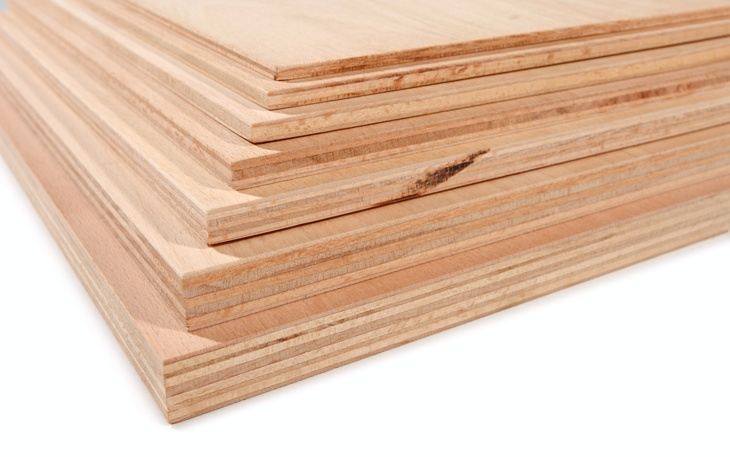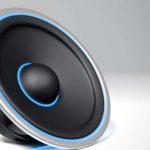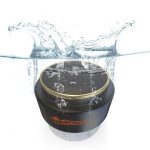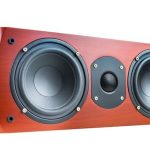Making a speaker box for your speaker can assist in improving the sound quality of your sound system. Speaker boxes are designed to improve the direction of sound. They work by directing sound toward the front area of the speaker. Besides, a speaker box keeps a speaker protected from damage by enclosing it.
However, the type of material used to make a speaker box has a significant influence on the sound that the speaker produces. Thus, building a speaker box with the wrong material can result in poor sound quality. Also, different materials have their own advantages and disadvantages like you will see in this article.
Wood is one of the best materials for making speaker boxes. Wood is beneficial in making speaker boxes in that it minimizes distortion, thanks to its natural acoustic and non-resonant properties. Also, wood is highly dense such that it allows for clear and rich sound output. Read on to learn more about the best wood for speaker box and how to choose the best wood for building a speaker box.
Types of Wood for Speaker Box
While wood is a great material for making speaker boxes, it’s available in different varieties. Wood is sourced from trees. Different tree varieties produce wood with different qualities. Thus, not all wood varieties can make good speaker boxes. Thus, it’ll help to know the best types of wood for making speaker boxes. The best options include:
1. Baltic Birch Plywood
Baltic birch plywood is preferred for its dense properties. As such, it doesn’t alter the tone of the sound coming from the speaker. It offers great sound quality and clarity properties. Although there’re several varieties of plywood to choose from, Baltic birch stands out for enhancing the performance and sound output of a speaker.
It’s also preferred for its durable and strong properties. Thus, it builds speaker boxes that remain intact for a long time. Although it’s dense, it’s light and easy to carry. Thus, you can easily move a speaker box made of Baltic birch plywood from one place to another as needed. One of the products made of this wood is the Woodpeckers Baltic Birch Plywood.
Advantages
I. Aesthetics- It makes attractive boxes. You can leave it exposed or treat it with a finishing of your choice. You can dye, coat, or stain it to match a certain décor.
II. Durable- It’s versatile and strong. Thus, it makes speaker boxes that can last for quite a long time.
III. Less susceptible to warping- It’s less susceptible to warping in comparison to other types of plywood, even when used in thick dimensions.
Disadvantages
I. Expensive- The main shortcoming of this wood is its expensive price tag. In fact, it’s the most expensive wood for making speaker boxes. It’s also the most expensive type of plywood. Its high price range is a result of its superior quality.
2. Medium-Density Fiberboard (MDF)
Medium-density fiberboard, simply MDF, is one of the most popularly used materials for making speaker boxes. It’s mainly preferred for its thick and dense qualities. Essentially, MDF is made from recycled wood particles mixed with wax and resin. The mixed materials are compacted during manufacture for consistent density and thickness. Consequently, the sound produced by a speaker is reflected consistently to ensure that it doesn’t add unwanted tones. MDF absorbs vibrations effortlessly, thereby minimizing unwanted noise. One of the products made of MDF is the Juvale MDF Wood Board.
Advantages
I. Easy to work with- You can easily cut through MDF, thanks to its consistency and lack of grain. Thus, you can customize a speaker box as needed and work with large boards effortlessly.
II. Uniform- Its uniformity and high density allow for clear sound output.
III. Easy to treat- It’s easy to treat MDF with paint or stain to give it a natural look. You can also coat it to match the desired décor.
Iv. Economical- MDF boards are more affordable than most other woods. Their affordability makes them ideal for making large speaker boxes.
Disadvantages
I. Less strong- MDF is not very strong like Baltic Birch Plywood. Thus, you need to handle it carefully to avoid damaging it. Also, you should nail or screw it carefully.
II. Heavy- The high compactness and density of MDF make it heavier than other woods. Thus, it’s not ideal for speaker boxes that need to be moved from one place to the other frequently.
III. Absorbs moisture- It tends to swell when kept in damp areas. It’s not suitable for use in highly humid areas.
3. Marine-Grade Plywood
Just like its name suggests, marine-grade plywood is often used in constructing boats, thanks to its waterproof nature. Thus, it’s ideal for making speaker boxes for marine applications. Its water-resistant properties make it popular for use in highly humid areas. Besides, it’s highly dense for reduced distortion. The RF Utility Grade Marine Board HDPE is one of the best products made of marine-grade plywood.
Advantages
I. Water-resistant- Its main selling point is its water-resistant nature. It doesn’t swell when exposed to water and humidity. Thus, it can last for quite a long time when used in making speaker boxes for marine speakers.
II. Flexible- Making marine-grade plywood involves joining several thin panels of wood. Thus, it’s flexible and quite strong. It doesn’t crack easily like regular wood.
III. Uniform toughness- There’re no knots formed when making this type of plywood. Thus, it has uniform strength.
Disadvantages
I. Expensive- Marine-grade plywood is more expensive than MDF. The reason behind this is the extensive manufacturing process used to make it.
4. Pine
Pine is one of the most affordable woods for making speaker boxes. It’s manufactured by combining several sheets of pine wood. Thus, it makes very durable speaker boxes. It also offers a natural look when used in its standard form. The Walnut Hollow Rectangle Pine Wood is one of the best pine products.
Advantages
I. Affordable- It’s more affordable than Baltic birch plywood and marine-grade plywood.
II. Durable- Pine, as stated earlier, comprises several sheets. Thus, it’s strong and durable. It doesn’t decay or rot easily.
III. Easy to treat- You can treat it with a paint of your choice.
Disadvantages
I. Not uniform- It comprises several sheets that are not very uniform. Thus, it’s relatively prone to minimal tonal changes.
5. Oak
Oak is largely preferred for its attractive look. Thus, it’s a perfect speaker box material for anyone who prefers having attractive audio equipment. The WOODNSHOP Red Oak Plywood is one of the best oak products.
Advantages
I. Treatable- It’s possible to finish or stain oak to match a preferred décor. You can also finish it with a clear coating.
II. Less prone to warping- It’s not largely affected by moisture and direct sunlight. Thus, it’s less prone to warping.
III. Durable- Oak is a durable material, thanks to its strength and ability to resist damage.
Disadvantages
I. Heavy- As a hardwood, it’s quite heavy. Thus, it’s challenging to move the speaker box from one place to another regularly.
II. Affects sound quality- Its hardwood nature makes it affect sound quality.
Top 5 Wood for Speaker Box
There’re several manufacturers specializing in making different types of wood for speaker box. Thus, the quality of the available types of wood may differ from one manufacturer to the other. As a result, it’ll help to make your choices carefully to stand better chances of getting the best value for your money. After all, you want the best sound quality of your sound system, which means investing in the best type of wood from speaker box. Here’re the best options to consider today.
Comparison Table of Best Wood for Speaker Box
[amazon box=”B08429ZRB1,B07C4PD283,B07RWPJSS8,B0018N9Y2S,B075Y246Q4″ template=”table”]
1. Premium Pick: Woodpeckers Baltic Birch Plywood
[amazon box=”B08429ZRB1″]
The Baltic Birch Plywood from Woodpeckers is specially designed for numerous applications including making speaker boxes, wood décor for home use, wood crafting for educational purposes, and professional wood-crafting among other applications.
It’s our premium pick, thanks to its extreme durability and strength. It comes with a thickness of 1/8 inches. Although it’s the most expensive pick in our review, it’s the strongest option. Its superior quality gives you great value for your money.
Top Features
- Heavy-duty- The surface of this type of wood offers great holding power for both screws and glue. As such, you can join different panels of this wood together to create very strong speaker boxes. The edges of the wood allow for clean joinery. Thus, you’re assured of making very strong and durable speaker boxes out of this wood.
- Great aesthetics- One of the reasons why this wood is loved is its superb aesthetics. It’s made using innovative wood manufacturing processes for a perfect finish. Its grain looks well-finished in its plain form. Besides, the wood is easy to stain for a lasting finish.
- Superior grade- The wood is categorized under the superior Grade B/BB hardwood. It features a back veneer and a single-piece face. The face surface is smoothened and colored lightly and uniformly. The back features small patches of color. Its thick face allows for a perfect surface to cut with engraving machines and CNC routers.
- Easy to work with- Another feature that stands out with this speaker box is that it’s easy to work with. You can easily cut out complex shapes, making it easy to build a custom speaker box. Besides, you can use it for laser cutting, wood burning, woodworking, scroll saws, and CNC routers.
- Great for DIY- You can easily use this wood to make DIY speaker boxes at home. You can use your creativity to make decorative speaker boxes out of this wood. It’s also perfect for making factory-manufactured speaker boxes and other professional projects.
Pros
- It’s extremely versatile such that you can use it for different applications and numerous cutting options
- You can easily stain it with a stain of your choice as it takes stain easily
- Its grain across the length of the plywood looks very appealing
- The plywood is very rigid and not prone to flexing
- It fits under a laser cutter without making any modifications to the laser cutter
Cons
- It’s in the higher price range and not ideal for someone with a tight budget
Our Verdict:
The Woodpeckers Baltic Birch Plywood is the best pick for anyone looking for premium quality wood for enhanced durability and strength.
2. Best Uniformity: Juvale MDF Wood Board
[amazon box=”B07C4PD283″]
Although the Juvale MDF Wood Board is thinner than the Woodpeckers Baltic Birch Plywood, it offers better consistency in the grain. In fact, it’s one of the most uniform wood in terms of grain. Thus, it’s quite easy to work with.
However, it’s heavier than plywood. Regardless it’s more affordable than the Woodpeckers Baltic Birch Plywood but a little more expensive than Walnut Hollow Rectangle Pine Wood and WOODNSHOP Red Oak Plywood.
Top Features
- Reduces distortion- The high density of this MDF minimizes the likelihood of distortion. It’s less prone to vibrations, thereby minimizing distortion. Also, its dense construction eliminates mechanical pressures that destroy sound quality.
- Super strong- The MDF board from Juvale boasts of having superb strength. Each board in the set is made from premium food fibers. Thus, you can make very durable speaker boxes out of these boards.
- Smoothly cut- Another top feature of these boards is their smooth edges. They’re finely cut during manufacture without leaving any rough edges. Thus, they’re safe to work with when building a DIY speaker box.
- Custom finish- You can use your creativity to design the kind of speaker box you want according to your preferences. You can easily cut these MDF boards into the desired shape. Besides, you can paint the boards or decorate them with a finish of your choice.
- High density- The manufacturing process used in making these boards produces highly dense MDF boards. Their high density enhances the sound output of a mounted speaker when used to make a speaker box.
Pros
- The hardwood construction allows for building durable speaker boxes
- The boards are easy to work with regardless of the shape you want
- The boards take stain easily and can be engraved as needed
- You can use them for any purpose you want
- Comes in a pack of 30 MDF boards, which can make several speaker boxes
Cons
- Not ideal for hammering nails into the boards
- The boards are not weatherproof and can get damaged by humidity
Our Verdict:
If you want to build highly dense speaker boxes, this Juvale MDF Wood Board is the best pick for you, thanks to its uniform construction with premium wood fibers.
3. Best Water Resistance: RF Utility Grade Marine Board HDPE
[amazon box=”B07RWPJSS8″]
This marine-grade board from RF comes in a thickness of 0.5 inches. It’s thicker than the Woodpeckers Baltic Birch Plywood and the Juvale MDF Wood Board. Thus, it can make denser speaker boxes for reduced sound distortion. However, it’s more expensive than the MDF, pine, and oak boards in our review.
Top Features
- Textured finish- It comes as a single marine-grade board measuring 24 inches long, 12 inches wide, and 0.5 inches thick. The board features a textured, black finish. The textured finish enhances its durability.
- Water-resistant- The construction behind this board makes it water-resistant. It has low moisture absorption properties. Thus, you can use it in highly humid environments without risking it to damage from moisture.
- Extreme operating temperatures- Another feature that made this board one of the best wood for speaker box is its extreme operating temperatures. You can use it within a wide temperature range of between -58 to 194 degrees Fahrenheit.
- Long-lasting- The design behind this board allows it to withstand scratches and rub markings without affecting its efficiency. Besides, it’s not prone to cracking, swelling, rotting, or splintering. Thus, it guarantees building long-lasting speaker boxes.
- Strongly made- The board resists impact, thanks to its strong build quality. Thus, it’s not easily damaged and keeps the mounted speaker protected from damage. Besides, it has high tensile strength for reduced flexing and vibration.
Pros
- It’s ideal for making speaker boxes for both indoor and outdoor use
- The board is made from non-toxic materials for enhanced safety
- It has great insulation properties and can be used under extreme temperatures
- You can easily machine and fabricate it to make a speaker box of the desired shape
- Its uniform density minimizes distortion for enhanced sound output
Cons
- Not ideal for staining and painting
- It comes as a single board, meaning that you have to spend more money to buy enough boards to make a speaker box
Our Verdict:
The water-resistant properties of this RF Utility Grade Marine Board HDPE make it perfect for making speaker boxes for marine applications.
4. Most Affordable Pick: Walnut Hollow Rectangle Pine Wood
[amazon box=”B0018N9Y2S”]
The Walnut Hollow Rectangle Pine Wood is the thickest wood for speaker box in our review. It comes with a thickness of 0.63 inches. Thus, it can make very thick speaker boxes. Also, it’s the most affordable wood-building speaker boxes in our review.
The design behind this wood makes it perfect for most basic crafting applications, including making speaker boxes.
Top Features
- Ultra-thick- One of the most outstanding features that come with this speaker is its ultra-thickness. It has a thickness of 0.63 inches. Thus, it makes very dense and heavy-duty speaker boxes.
- Takes stain- Another top feature of this wood is that it takes stain or paint easily. You can stain or paint it with a color of your choice. That way, you can match it with existing décor. Also, you can stamp it effortlessly. It also allows for adding embellishments.
- Easy to curve- If you want to make a designer or custom speaker box, you can easily curve a design of your choice from this wood. It’s easy to work with such that you can easily make a DIY speaker box.
- Decorative- Anyone who values the beauty that comes with decorative wood will definitely love using this board to make speaker boxes. There’re visible knots on the wood that add to its character and décor. You can use the wood the way it is without any further finishing, especially if you love the natural look of wood.
- Kiln-dried- The wood has undergone a kiln-drying process during manufacture. Kiln drying eliminates any moisture in the wood. Thus, you’re guaranteed that your speaker box won’t experience issues such as twisting and warping.
Pros
- You can decorate the wood as needed
- The surface of the wood allows for attaching stamps and stickers
- The wood is very strong for increased durability of a speaker box
- The surface of the wood is finely sanded to make a ready surface for making speaker boxes
- Adhesive sticks tightly when joining several pieces of the wood together to make a speaker box
Cons
- A little prone to tonal changes
- It requires light sanding before painting for the paint to adhere
Our Verdict:
If you want to build a reliable speaker box but you’re working with a tight budget, consider this Walnut Hollow Rectangle Pine Wood, thanks to its affordable price range.
5. Best Look: WOODNSHOP Red Oak Plywood
[amazon box=”B075Y246Q4″]
The WOODNSHOP Red Oak Plywood is the second most affordable wood for building speaker box in our review. It’s designed with lovers of DIY projects in mind. You can use it for your DIY speaker box making project and other wooden crafts.
Top Features
- Flexible- The design behind this wood allows for enhanced flexibility. You can cut it into any desired shape to make a speaker box of any design. As a result, it’s great for putting your creativity into practice.
- Properly sized- The wood measures 24 by 48 inches with a width of 0.25 inches. These dimensions are perfect for both small and big projects. Thus, you can make either small or large speaker boxes.
- Pre-sanded finish- It comes pre-sanded yet looks very cleanly finished. As such, you don’t have to sand it any further in order to paint or stain it. That way, it takes any paint or stain easily.
- Uniform thickness- The manufacturing process used in making this wood out of red oak allows for uniform thickness. Its uniform thickness increases the density of the wood. As a result, making a speaker box out of this wood will allow for improved sound quality.
- Rich finish- This wood comes in rich red oak color. The color gives it a very attractive look. Also, its visible grains give it a very distinguished and vibrant look of natural wood.
Pros
- It’s purely made of hardwood red oak for enhanced durability
- Sanded with perfect calibration for uniform thickness
- It’s nicely made and feels very solid for longevity
- The smooth sanding finish makes it easy to make markings when cutting the wood
Cons
- It’s a little heavy and not great for constant movement of a speaker box
- As a hardwood, you may have to install sound deadening material in the interior panels to prevent sound distortion
Our Verdict:
The WOODNSHOP Red Oak Plywood is a perfect choice for anyone who wants great-looking wood for speaker box at an affordable price.
How to Choose the Best Wood for Speaker Box
As you can see, wood for the speaker box is available in different qualities. Thus, it’ll help you to know how to make your choice wisely depending on your sound needs. After all, different music lovers have different listening needs. Regardless, here’re some tips to assist you on how to choose the best quality wood for building a speaker box.
1. Dimensions
When building a speaker box, you should take note of the required dimensions depending on the size of your speaker. Ensure the wood you’re choosing is large enough to make a full panel for each side of the speaker box. It’ll help to use a single panel of wood for each side of the speaker rather than joining multiple pieces of wood to make one side of a speaker box. Also, ensure the wood panel is thick enough as per your sound needs.
2. Weight
The weight of the wood panel is another important consideration to make. If you’re planning to move your speaker box to and fro a certain location often, consider choosing lighter wood. However, ensure the wood is strong enough to support the weight of the speaker you want to mount to avoid flexing issues that may interfere with the sound quality. If you’re not planning to move the speaker box often, then the weight of the wood won’t be a major concern.
3. Durability
It’s important to choose the wood that can last the test of time. For instance, it should resist moisture damage, especially if you’ll be using the speaker box outdoors or in highly humid environments. Also, ensure the wood is not prone to warping, splintering, and rotting. That way, you’ll build a durable speaker box.
4. Density
Different types of wood have different densities. Wood with higher density allows for better acoustic performance by minimizing distortion and other sound changes. Wood with low density allows distortion such that you won’t get optimal sound output from the speaker.
5. Ease of Use
It should be easy to work with the wood. For instance, it should be easy to cut through the wood and make any shapes you want. The wood should work with the crafting method you’re planning to use when building your speaker box.
6. Ease of Staining
You may want to stain or paint the wood to give it the desired finish that matches a preferred décor. Thus, ensure the wood takes stain or paint effortlessly. If you’re planning to use the wood in its original or natural finish, then this factor shouldn’t be a major concern.
Final Thoughts
Choosing the right wood to make a speaker box can be a daunting task, considering the numerous types of wood and wood manufacturers to choose from. Just ensure you keep the factors we’ve highlighted in mind. Also, compare different woods in terms of their characteristics, advantages, and shortcomings. Luckily for you, we’ve reviewed the best wood for speaker box to make your shopping experience easier and smoother. Hopefully, you’ll find the right pick from our list.
Michael Evanchuk is a San Francisco-based sound engineer with 20 years’ experience installing, troubleshooting, and repairing commercial, automotive, and household sound equipment. Evanchuk owns an auto stereo center, where he offers highly competitive car audio installation and repair services. He has written dozens of articles on different sound engineering topics, all of which have been published in leading journals, blogs, and websites.





